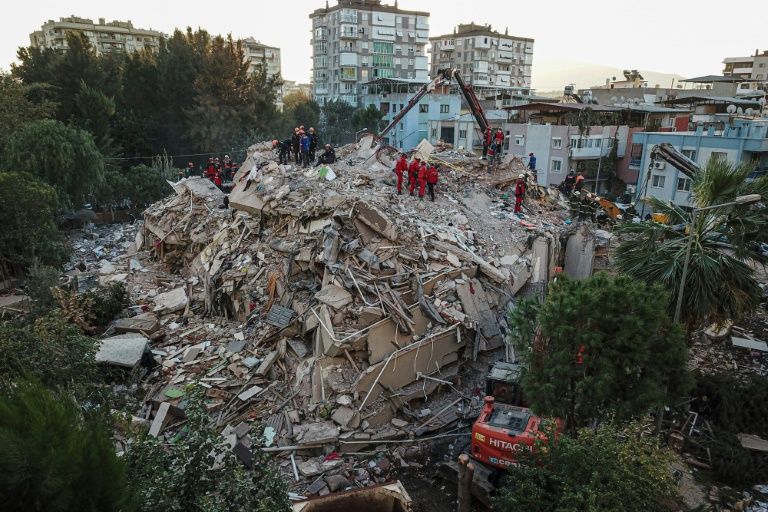Public Health Experts Identify Militarism As Threat
By David Swanson
A remarkable article appears in the June 2014 issue of the American Journal of Public Health. (Also available as free PDF here.)
The authors, experts in public health, are listed with all their academic credentials: William H. Wiist, DHSc, MPH, MS, Kathy Barker, PhD, Neil Arya, MD, Jon Rohde, MD, Martin Donohoe, MD, Shelley White, PhD, MPH, Pauline Lubens, MPH, Geraldine Gorman, RN, PhD, and Amy Hagopian, PhD.
Some highlights and commentary:
"In 2009 the American Public Health Association (APHA) approved the policy statement, \’The Role of Public Health Practitioners, Academics, and Advocates in Relation to Armed Conflict and War.\’ . . . In response to the APHA policy, in 2011, a working group on Teaching the Primary Prevention of War, which included the authors of this article, grew . . . ."
"Since the end of World War II, there have been 248 armed conflicts in 153 locations around the world. The United States launched 201 overseas military operations between the end of World War II and 2001, and since then, others, including Afghanistan and Iraq. During the 20th century, 190 million deaths could be directly and indirectly related to war — more than in the previous 4 centuries."
These facts, footnoted in the article, are more useful than ever in the face of the current academic trend in the United States of proclaiming the death of war. By re-categorizing many wars as other things, minimizing death counts, and viewing deaths as proportions of the global population rather than of a local population or as absolute numbers, various authors have tried to claim that war is vanishing. Of course, war could and should vanish, but that is only likely to happen if we find the drive and the resources to make it happen.
"The proportion of civilian deaths and the methods for classifying deaths as civilian are debated, but civilian war deaths constitute 85% to 90% of casualties caused by war, with about 10 civilians dying for every combatant killed in battle. The death toll (mostly civilian) resulting from the recent war in Iraq is contested, with estimates of 124,000 to 655,000 to more than a million, and finally most recently settling on roughly a half million. Civilians have been targeted for death and for sexual violence in some contemporary conflicts. Seventy percent to 90% of the victims of the 110 million landmines planted since 1960 in 70 countries were civilians."
This, too, is critical, as a top defense of war is that it must be used to prevent something worse, called genocide. Not only does militarism generate genocide rather than preventing it, but the distinction between war and genocide is a very fine one at best. The article goes on to cite just some of the health effects of war, of which I will cite just some highlights:
"The World Health Organization (WHO) Commission on the Social Determinants of Health pointed out that war affects children\’s health, leads to displacement and migration, and diminishes agricultural productivity. Child and maternal mortality, vaccination rates, birth outcomes, and water quality and sanitation are worse in conflict zones. War has contributed to preventing eradication of polio, may facilitate the spread of HIV/ AIDS, and has decreased availability of health professionals. In addition, landmines cause psychosocial and physical consequences, and pose a threat to food security by rendering agricultural land useless. . . .
"Approximately 17,300 nuclear weapons are presently deployed in at least 9 countries (including 4300 US and Russian operational warheads, many of which can be launched and reach their targets within 45 minutes). Even an accidental missile launch could lead to the greatest global public health disaster in recorded history.
"Despite the many health effects of war, there are no grant funds from the Centers for Disease Control and Prevention or the National Institutes of Health devoted to the prevention of war, and most schools of public health do not include the prevention of war in the curriculum."
Now, there is a huge gap in our society that I bet most readers hadn\’t noticed, despite its perfect logic and obvious importance! Why should public health professionals be working to prevent war? The authors explain:
"Public health professionals are uniquely qualified for involvement in the prevention of war on the basis of their skills in epidemiology; identifying risk and protective factors; planning, developing, monitoring, and evaluating prevention strategies; management of programs and services; policy analysis and development; environmental assessment and remediation; and health advocacy. Some public health workers have knowledge of the effects of war from personal exposure to violent conflict or from working with patients and communities in armed conflict situations. Public health also provides a common ground around which many disciplines are willing to come together to form alliances for the prevention of war. The voice of public health is often heard as a force for public good. Through regular collection and review of health indicators public health can provide early warnings of the risk for violent conflict. Public health can also describe the health effects of war, frame the discussion about wars and their funding . . . and expose the militarism that often leads to armed conflict and incites public fervor for war."
About that militarism. What is it?
"Militarism is the deliberate extension of military objectives and rationale into shaping the culture, politics, and economics of civilian life so that war and the preparation for war is normalized, and the development and maintenance of strong military institutions is prioritized. Militarism is an excessive reliance on a strong military power and the threat of force as a legitimate means of pursuing policy goals in difficult international relations. It glorifies warriors, gives strong allegiance to the military as the ultimate guarantor of freedom and safety, and reveres military morals and ethics as being above criticism. Militarism instigates civilian society\’s adoption of military concepts, behaviors, myths, and language as its own. Studies show that militarism is positively correlated with conservatism, nationalism, religiosity, patriotism, and with an authoritarian personality, and negatively related to respect for civil liberties, tolerance of dissent, democratic principles, sympathy and welfare toward the troubled and poor, and foreign aid for poorer nations. Militarism subordinates other societal interests, including health, to the interests of the military."
And does the United States suffer from it?
"Militarism is intercalated into many aspects of life in the United States and, since the military draft was eliminated, makes few overt demands of the public except the costs in taxpayer funding. Its expression, magnitude, and implications have become invisible to a large proportion of the civilian population, with little recognition of the human costs or the negative image held by other countries. Militarism has been called a \’psychosocial disease,\’ making it amenable to population-wide interventions. . . .
"The United States is responsible for 41% of the world\’s total military spending. The next largest in spending are China, accounting for 8.2%; Russia, 4.1%; and the United Kingdom and France, both 3.6%. . . . If all military . . . costs are included, annual [US] spending amounts to $1 trillion . . . . According to the DOD fiscal year 2012 base structure report, \’The DOD manages global property of more than 555,000 facilities at more than 5,000 sites, covering more than 28 million acres.\’ The United States maintains 700 to 1000 military bases or sites in more than 100 countries. . . .
"In 2011 the United States ranked first in worldwide conventional weapons sales, accounting for 78% ($66 billion). Russia was second with $4.8 billion. . . .
"In 2011-2012, the top-7 US arms producing and service companies contributed $9.8 million to federal election campaigns. Five of the top-10 [military] aerospace corporations in the world (3 US, 2 UK and Europe) spent $53 million lobbying the US government in 2011. . . .
"The main source of young recruits is the US public school system, where recruiting focuses on rural and impoverished youths, and thus forms an effective poverty draft that is invisible to most middle- and upper-class families. . . . In contradiction of the United States\’ signature on the Optional Protocol on the Involvement of Children in Armed Conflict treaty, the military recruits minors in public high schools, and does not inform students or parents of their right to withhold home contact information. The Armed Services Vocational Aptitude Battery is given in public high schools as a career aptitude test and is compulsory in many high schools, with students\’ contact information forwarded to the military, except in Maryland where the state legislature mandated that schools no longer automatically forward the information."
Public health advocates also lament the tradeoffs in types of research the United States invests in:
"Resources consumed by military . . . research, production, and services divert human expertise away from other societal needs. The DOD is the largest funder of research and development in the federal government. The National Institutes of Health, the National Science Foundation, and Centers for Disease Control and Prevention allocate large amounts of funding to programs such as \’BioDefense.\’ . . . The lack of other funding sources drives some researchers to pursue military or security funding, and some subsequently become desensitized to the influence of the military. One leading university in the United Kingdom recently announced, however, it would end its £1.2 million investment in a . . . company that makes components for lethal US drones because it said the business was not \’socially responsible.\’"
Even in President Eisenhower\’s day, militarism was pervasive: "The total influence — economic, political, even spiritual — is felt in every city, every statehouse, every office of the federal government." The disease has spread:
"The militaristic ethic and methods have extended into the civilian law enforcement and justice systems. . . .
"By promoting military solutions to political problems and portraying military action as inevitable, the military often influences news media coverage, which in turn, creates public acceptance of war or a fervor for war. .
The views expressed in this article are the author\’s own and do not necessarily reflect The Times Of Earth\’s editorial policy.











